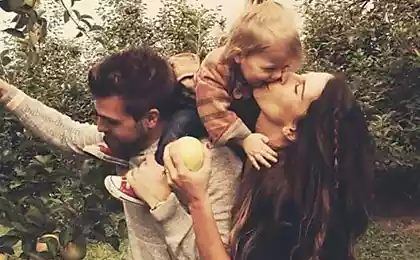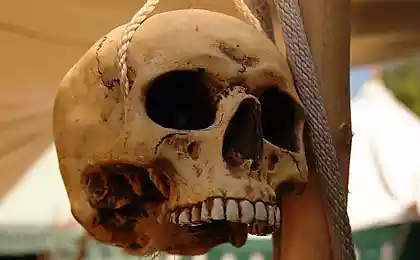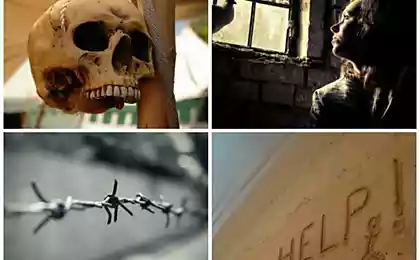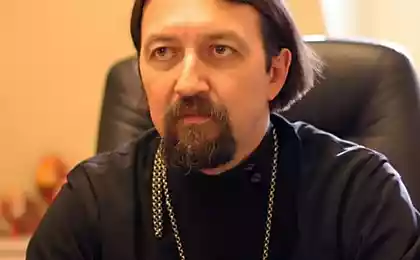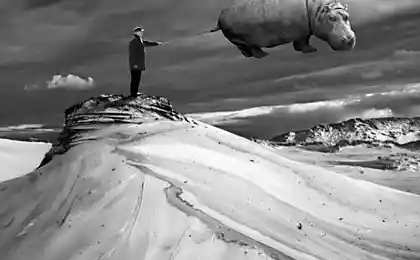880
An amazing story of the Siberian family that 40 years have not seen other people
Living in isolation is now the Siberian wilderness - still one of the most isolated places in the world.
Siberian taiga - remote and uninhabited part planetySibirskaya taiga, her sharp cold climate severely inhibit colonization of the area. The steep hills and difficult terrain make it inaccessible and unsuitable for living. There are growing coniferous forests and birch groves, almost untouched by man for centuries. Bears and foxes roam the forest during the day and at night hunt wolves. The average annual temperature - minus five degrees Celsius. Stretching from east to west by the Pacific Ocean to the Ural Mountains and from north to south from the Arctic to the border with Mongolia, the taiga - the largest of the almost uninhabited areas of the Earth.
Unexpected discovery geologovV 1978 a group of Soviet geologists were sent to explore the most remote and isolated parts of the region. Flying by helicopter over the taiga, they saw what they at first seemed completely impossible - a clearing with a garden, clear evidence of human presence.
They were almost 260 kilometers from the nearest settlement. After landing, the geologists decided to explore this place at your own risk. Later Galina Pismenskaya geologist told me that they "left gifts in packages for our potential friends," a regular check on whether the gun.
Continue the search, they found other traces of human presence: a wooden staff, bridge over a stream, and then saw the hut and cautiously approached her. Improvised door creaked open, and out came an old man in ragged clothes with long unkempt beard. Despite the "fear in his eyes," the old man said quietly, "Well, since you've gone so far as to welcome».
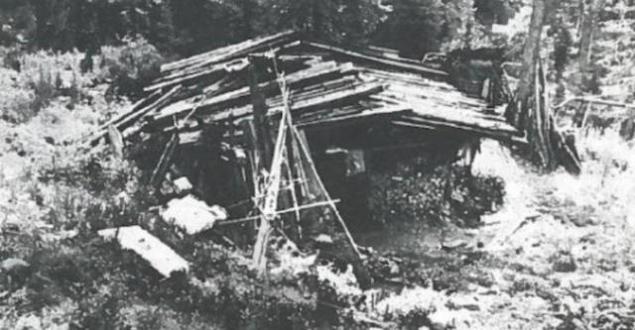
StaroobryadtsyUvidennoe amazed geologists. The dwelling was like a little house, the floor littered with potato peel and pine cones, everything was covered in mud. When they looked at the dimly lit hut, it was discovered that the house is for a family of five people - a father and four children, two of them began to cry at the sight of strangers.
As told by geologists old Karp Lykov once lived in the populated part of Russia. He was a member of a fundamentalist sect, known as the "Old Believers". It was called so because of their way of worship has not changed since the 17th century. Old Believers were persecuted in Russia for centuries, before the October Revolution. The sect originated during the reign of Peter the Great in the late 17th and early 18th centuries, the Old Believers, who are required to wear beards, were forced to pay tax on facial hair.

In complete isolation in the midst of impenetrable taygiVo Soviet times Karp decided it was time to go in some sparsely populated city in Siberia. In 1936, while working in the field, his brother was shot right in front of him. Carp immediately grabbed his family, which at that time consisted of a wife, a son and two-year daughter Savina Natalia, and disappeared in the Siberian taiga.
In the taiga at Carp and his wife Akulina appeared two more children, Dmitry and Agatha, who before meeting with geologists have never seen other people other than family members. All they knew about the civilization, the children received from their parents. They taught them to read and write with the help of an old Bible.
The family did not know anything about the world after 1936, including the Second World War. Each member of the family has learned to provide for themselves, using only the resources that are available in the taiga.
When the children grew up, they became hunters and gatherers. Dmitri, for example, learned how to kill animals without weapons. He did this by digging traps and chasing animals as long as they do not fall from exhaustion.
The family has become much harder when, in about 1961, died of starvation Akulina. Now the family consisted of a father and four children struggling to survive.
Geologists and fate LykovyhPonimaya how their presence can be traumatic for the psyche of children (because they've never seen before other people), geologists came out of the house and were camped nearby. The family soon got used to it, Carp and the children began to approach the scientist, first with fear and curiosity.
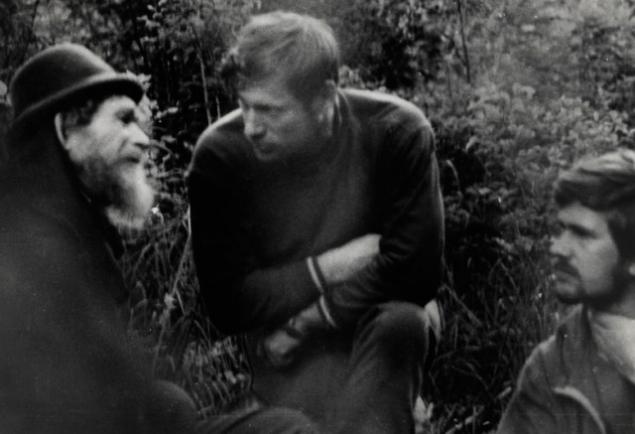
They gave up everything that gave them geologists, including the clothes, food and bread. Karp explained that his younger children bread never even seen. Geologists told them about what had happened in the world since 1936, and showed the modern things. Seeing cellophane, Karp said, "Lord, it is necessary to come up with a w - a window, but it hesitates!" TV scared them and at the same time resulted in delight. In turn, family members told the geologists how to survive in the Siberian taiga, and how to grow a crop in such harsh conditions.
Geologists continued to explore the taiga, coexisting with his family for several years. Sometimes scientists try to convince Lykovs back to civilization, but they refused. In the fall of 1981, three out of four children (Dmitry, Natalia and Savin) died within a few days, two of kidney failure and one - from pneumonia. Geologists have offered to carry the sick to the hospital, but their proposal was strongly rejected.

After this tragedy, geologists have more than once tried to convince Karp, now an old man aged well over 80 years, and his youngest daughter Agafia move to a nearby village. They still refused. February 16, 1988, 27 years after his wife's death, Karp died in his sleep, leaving Agafya one. Move anywhere she wanted. As far as is known, she still lives in the impenetrable Siberian taiga.
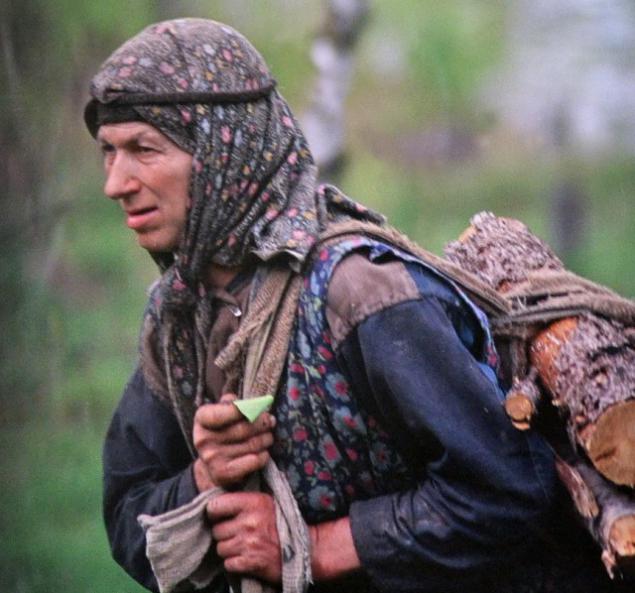
via www.todayifoundout.com/index.php/2013/05/the-siberian-family-who-didnt-see-another-human-for-over-40-years/
Siberian taiga - remote and uninhabited part planetySibirskaya taiga, her sharp cold climate severely inhibit colonization of the area. The steep hills and difficult terrain make it inaccessible and unsuitable for living. There are growing coniferous forests and birch groves, almost untouched by man for centuries. Bears and foxes roam the forest during the day and at night hunt wolves. The average annual temperature - minus five degrees Celsius. Stretching from east to west by the Pacific Ocean to the Ural Mountains and from north to south from the Arctic to the border with Mongolia, the taiga - the largest of the almost uninhabited areas of the Earth.
Unexpected discovery geologovV 1978 a group of Soviet geologists were sent to explore the most remote and isolated parts of the region. Flying by helicopter over the taiga, they saw what they at first seemed completely impossible - a clearing with a garden, clear evidence of human presence.
They were almost 260 kilometers from the nearest settlement. After landing, the geologists decided to explore this place at your own risk. Later Galina Pismenskaya geologist told me that they "left gifts in packages for our potential friends," a regular check on whether the gun.
Continue the search, they found other traces of human presence: a wooden staff, bridge over a stream, and then saw the hut and cautiously approached her. Improvised door creaked open, and out came an old man in ragged clothes with long unkempt beard. Despite the "fear in his eyes," the old man said quietly, "Well, since you've gone so far as to welcome».

StaroobryadtsyUvidennoe amazed geologists. The dwelling was like a little house, the floor littered with potato peel and pine cones, everything was covered in mud. When they looked at the dimly lit hut, it was discovered that the house is for a family of five people - a father and four children, two of them began to cry at the sight of strangers.
As told by geologists old Karp Lykov once lived in the populated part of Russia. He was a member of a fundamentalist sect, known as the "Old Believers". It was called so because of their way of worship has not changed since the 17th century. Old Believers were persecuted in Russia for centuries, before the October Revolution. The sect originated during the reign of Peter the Great in the late 17th and early 18th centuries, the Old Believers, who are required to wear beards, were forced to pay tax on facial hair.

In complete isolation in the midst of impenetrable taygiVo Soviet times Karp decided it was time to go in some sparsely populated city in Siberia. In 1936, while working in the field, his brother was shot right in front of him. Carp immediately grabbed his family, which at that time consisted of a wife, a son and two-year daughter Savina Natalia, and disappeared in the Siberian taiga.
In the taiga at Carp and his wife Akulina appeared two more children, Dmitry and Agatha, who before meeting with geologists have never seen other people other than family members. All they knew about the civilization, the children received from their parents. They taught them to read and write with the help of an old Bible.
The family did not know anything about the world after 1936, including the Second World War. Each member of the family has learned to provide for themselves, using only the resources that are available in the taiga.
When the children grew up, they became hunters and gatherers. Dmitri, for example, learned how to kill animals without weapons. He did this by digging traps and chasing animals as long as they do not fall from exhaustion.
The family has become much harder when, in about 1961, died of starvation Akulina. Now the family consisted of a father and four children struggling to survive.
Geologists and fate LykovyhPonimaya how their presence can be traumatic for the psyche of children (because they've never seen before other people), geologists came out of the house and were camped nearby. The family soon got used to it, Carp and the children began to approach the scientist, first with fear and curiosity.

They gave up everything that gave them geologists, including the clothes, food and bread. Karp explained that his younger children bread never even seen. Geologists told them about what had happened in the world since 1936, and showed the modern things. Seeing cellophane, Karp said, "Lord, it is necessary to come up with a w - a window, but it hesitates!" TV scared them and at the same time resulted in delight. In turn, family members told the geologists how to survive in the Siberian taiga, and how to grow a crop in such harsh conditions.
Geologists continued to explore the taiga, coexisting with his family for several years. Sometimes scientists try to convince Lykovs back to civilization, but they refused. In the fall of 1981, three out of four children (Dmitry, Natalia and Savin) died within a few days, two of kidney failure and one - from pneumonia. Geologists have offered to carry the sick to the hospital, but their proposal was strongly rejected.

After this tragedy, geologists have more than once tried to convince Karp, now an old man aged well over 80 years, and his youngest daughter Agafia move to a nearby village. They still refused. February 16, 1988, 27 years after his wife's death, Karp died in his sleep, leaving Agafya one. Move anywhere she wanted. As far as is known, she still lives in the impenetrable Siberian taiga.

via www.todayifoundout.com/index.php/2013/05/the-siberian-family-who-didnt-see-another-human-for-over-40-years/
